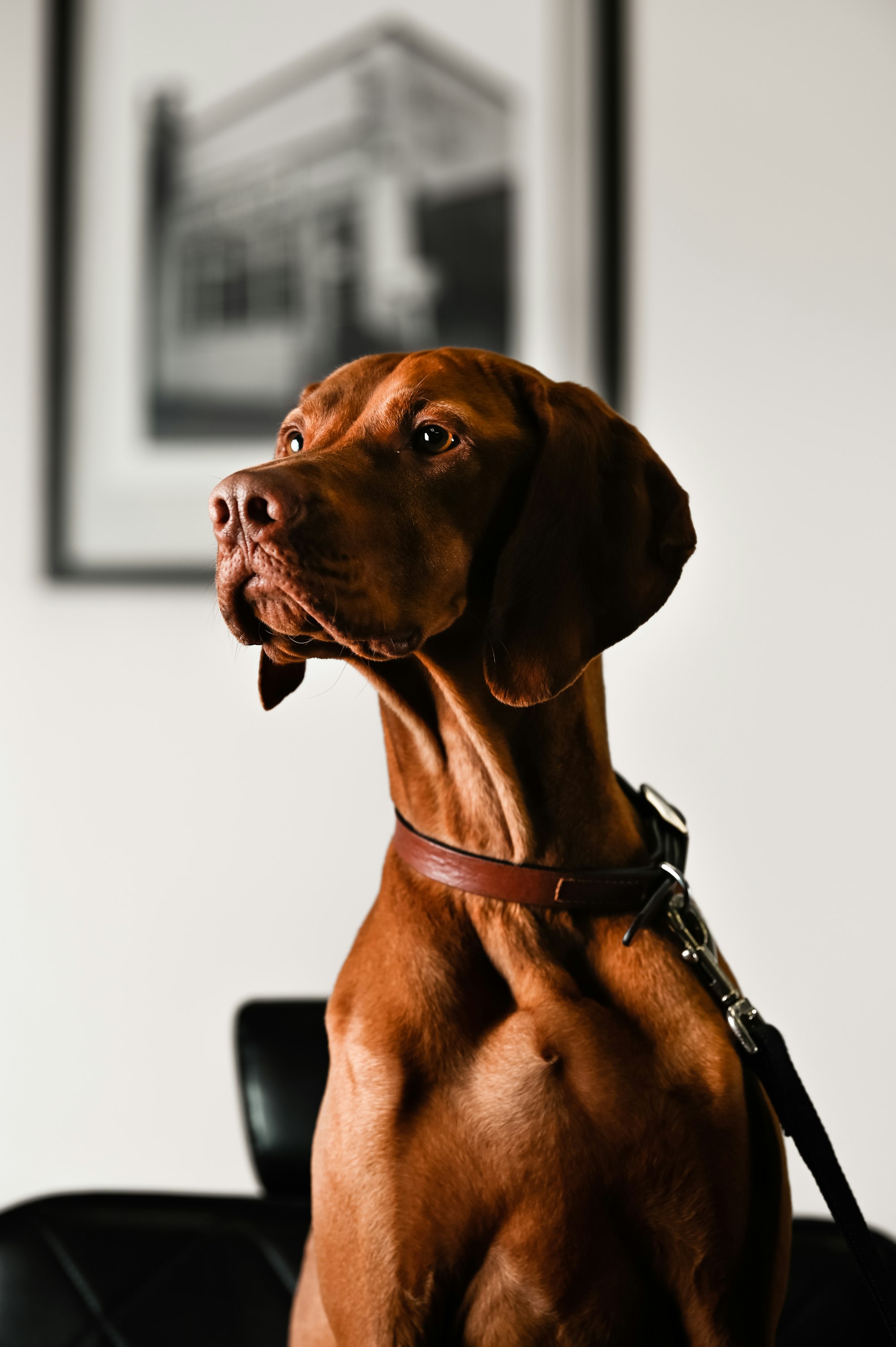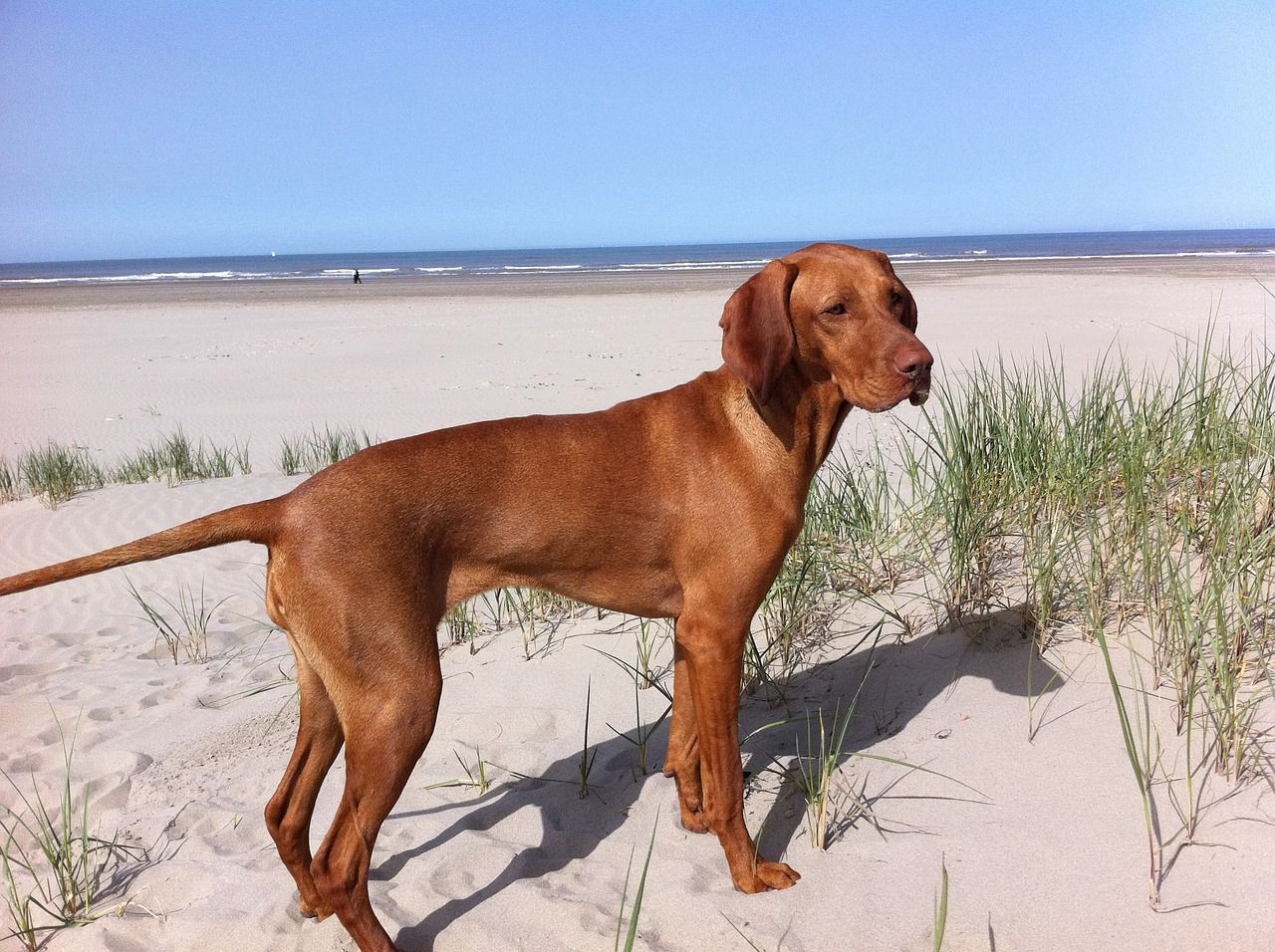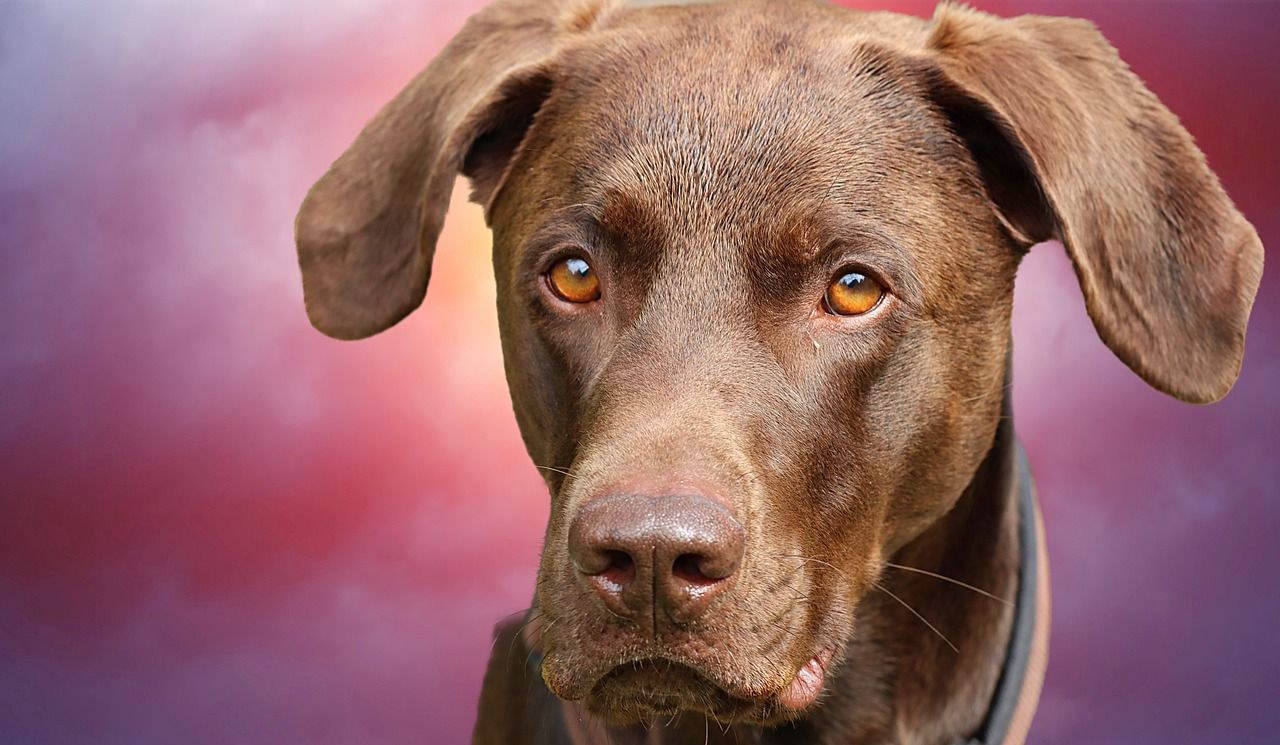There's a captivating allure surrounding the Vizsla, a breed known for its fiery reddish-gold coat, enthusiastic demeanor, and endless zest for life. But delve deeper, past the elegant looks and boundless energy, and you find yourself faced with a burning question: “Are Vizslas easy to train?” Ah, the age-old conundrum that has stirred countless debates among dog enthusiasts. Allow me to take you on a journey, a story if you will, to uncover the truth about Vizsla trainability.

The Tale of Young Max
To start our story, let's travel to a quaint neighbourhood where a young Vizsla named Max made his home. Like any other Vizsla puppy, Max was a whirlwind of energy, curiosity, and, yes, mischief. His human, Sophie, was intent on ensuring Max became a well-behaved family member. She had heard contrasting tales: some said Vizslas were a breeze to train, while others lamented their stubborn streak. The narrative of Max and Sophie's adventures in training is much like that of any Vizsla owner, peppered with highs, lows, joy, and a bit of frustration.
Vizsla Intelligence: A Double-Edged Sword
Now, Vizslas, as a breed, are undeniably intelligent. They're quick learners, often surprising their owners with their rapidly picking up on commands. In our tale, Max, with his bright eyes and keen senses, managed to grasp the basics like "sit", "stay", and "come" in no time. Sophie was ecstatic!
However, the flip side of their intelligence means they're equally adept at picking up bad habits. Vizslas can sometimes be mischievous, using their smarts to get into trouble. A week into their training, Sophie found Max on the kitchen counter, a half-eaten sandwich in his mouth. Oh, the challenges of Vizsla behavior!
Consistency is Key
One significant lesson Sophie learned early on was the importance of consistency. Training tips for Vizslas often highlight this crucial aspect. The breed thrives on routine and clear expectations. Every time Sophie slacked off, thinking Max had mastered a command, he'd surprise her by regressing a little. It was a dance of two steps forward, one step back. But with persistence, they made progress.
The Vizsla Temperament: An Asset and a Challenge
Another element that plays into Vizsla trainability is their temperament. These dogs are known for being incredibly affectionate, often termed "Velcro dogs" because they're so attached to their humans. This bond can be a powerful tool in training. Max, for instance, was eager to please Sophie. When she praised him, his tail wagged furiously, and his eyes sparkled with pride. Positive reinforcement worked wonders!
However, their deep attachment means Vizslas can develop separation anxiety. Without proper training, they can become destructive when left alone. Sophie realized this when she returned home one day to find her favorite shoes in tatters. It was a learning curve, understanding the intricacies of Vizsla temperament and addressing the challenges head-on.
Puppies vs. Adults: A Different Ball Game
As with many breeds, there's a distinction between Vizsla puppy training and training an adult. Puppies, with their boundless energy and short attention spans, require a different approach than more mature dogs. Sophie had to adapt her methods, incorporating play and shorter training sessions for young Max.
With age, while the boundless energy might wane slightly, the Vizsla intelligence and eagerness to please remain. It's a testament to the fact that it's never too late to train a Vizsla, whether you're teaching a puppy or introducing an older dog to new tricks.

The Vizsla Community: A Trove of Insights
One of the incredible facets of owning a breed like the Vizsla is the tight-knit community that surrounds it. These enthusiastic dog owners are always eager to share their experiences and provide valuable insights into Vizsla trainability. Sophie soon discovered the power of this community.
Joining the Pack: Local Groups and Online Forums
Sophie joined a local Vizsla group, attending weekly meet-ups in parks. It was a sight to behold—dozens of these golden-reddish beauties frolicking around, their owners swapping stories of triumphs and mishaps. These gatherings became invaluable for Sophie. Exchanging training tips for Vizslas with seasoned owners gave her new perspectives and strategies.
Online forums and social media groups proved equally beneficial. Sophie found herself deep-diving into threads about Vizsla behavior, learning from others' experiences, and realizing she wasn't alone in her training journey. Whether it was a quirky habit Max developed or a challenge she faced, there was always someone who had been through a similar situation.
Building a Support System
Sophie's endeavors to connect with other Vizsla owners created a support system. When Max went through his notorious 'teenage phase', becoming more independent and occasionally stubborn, Sophie was prepared. She had heard tales of this phase from her newfound friends. They reassured her, offered advice, and celebrated with her when Max eventually matured and became more consistent in his behavior.
It wasn't just about the challenges. The community rejoiced in the little victories, like when Max finally mastered the 'heel' command or when he learned to play fetch without getting distracted.
Professional Training: Yay or Nay?
While Sophie was making strides with Max, she also contemplated seeking professional help. After all, Vizsla obedience schools and trainers were aplenty. The consensus in the community was mixed. Some swore by professional training sessions, especially for specific issues like aggression or extreme separation anxiety. Others believed that with dedication, one could manage without them.
Sophie opted for a middle path. She enrolled Max in a short obedience course, not so much because he was unmanageable, but to refine his skills. The experience was enriching. Max learned to socialize with other breeds, and Sophie gained advanced training techniques.
Embracing the Vizsla Lifestyle
As months turned into years, Sophie realized that training Max wasn't just about commands and behaviors. It was about understanding and embracing the Vizsla lifestyle. These dogs, with their history as Hungarian hunting dogs, have a natural zest for life. Their curiosity, paired with their remarkable Vizsla intelligence, means they're always on the go.
Sophie channeled Max's energy into activities they both enjoyed. They took up agility training, went on long hikes, and even dabbled in scent detection games. These activities not only kept Max mentally and physically stimulated but also strengthened their bond.
The Layers of Vizsla Training: Beyond Basic Commands
Every dog breed has its idiosyncrasies, and the Vizsla is no different. As Sophie delved deeper into her training journey with Max, she realized that it wasn't just about teaching sit, stay, or fetch. There were layers to this, nuances that needed addressing.
Socialization: The Building Block
- Introducing New Environments: Max was initially wary of new places. Sophie made it a point to expose him to various settings—parks, beaches, city streets—to build his confidence.
- Meeting Other Dogs: Regular visits to dog parks helped Max become more sociable, learning to play and interact without becoming overly dominant or timid.
- Human Interactions: From toddlers to the elderly, Sophie ensured Max was comfortable around all age groups, reducing the chances of unexpected aggressive behaviors.

Advanced Commands: Going the Extra Mile
Sophie decided to challenge Max further with advanced commands. These weren't just tricks but ways to mentally stimulate him.
- Finding Hidden Objects: Capitalizing on the Vizsla's hunting background, Sophie would hide toys, encouraging Max to locate them using his keen sense of smell.
- Voice vs. Hand Signals: Max was taught to respond not just to voice commands but also to specific hand signals—a handy tool in noisy environments.
- Emergency Stops: For safety, Sophie trained Max to stop immediately on command, especially useful during their outdoor adventures.
Dietary Habits: Fueling the Energy
Every Vizsla owner knows the importance of a balanced diet to complement their dog's high-energy lifestyle.
- Nutrient-Rich Foods: Sophie ensured Max's diet was packed with proteins, healthy fats, and essential vitamins.
- Hydration: Active breeds like Vizslas need ample water. Sophie always carried a portable water bowl during their excursions.
- Treats as Rewards: Sophie often opted for healthier options like carrot sticks or boiled chicken pieces instead of store-bought snacks to reward Max during training sessions.
Overcoming Common Vizsla Challenges
Separation Anxiety: A Common Hurdle
Vizslas, with their affectionate nature, can struggle when left alone. Sophie faced this with Max, but with a few strategies, they managed:
- Safe Spaces: Creating a comfortable corner in the house with Max's toys and bedding.
- Distractions: Leaving puzzle toys or treat-dispensing gadgets to keep him occupied.
- Gradual Training: Starting with short absences and gradually increasing the duration, reinforcing the idea that Sophie would always return.
The Boundless Energy: Channeling it Right
Vizslas are active, and without the right outlet, they can become destructive.
- Daily Exercise: Beyond walks, Sophie incorporated activities like fetch, tug-of-war, and even swimming.
- Mental Stimulation: Interactive toys, agility courses, and regular training sessions kept Max's mind engaged.
- Routine: Vizslas thrive on routine. Regular meal times, exercise slots, and bedtime helped Max stay calm and well-adjusted.
The Vizsla Legacy: An Ancestral Tale
As Sophie continued her journey with Max, she grew more curious about the Vizsla's heritage. How much of Max's behavior was instinctual, rooted in a history that spanned centuries? To truly appreciate and understand her canine companion, Sophie delved into the legacy of the Vizsla breed.
From Hungarian Fields to Modern Homes
Vizslas, historically known as the Hungarian Pointer, were bred in Hungary for hunting. This ancestral background plays a significant role in their behavior today.
- Natural Retrievers: Vizslas were trained to point and retrieve game. This explains their affinity for fetch games and their keen sense of smell.
- Endurance Athletes: Bred to accompany hunters across vast terrains, their stamina is legendary. Modern-day owners, like Sophie, must be prepared to cater to this high energy level.
- Loyal Companions: Beyond hunting, Vizslas were family dogs, forming close bonds with their human counterparts. This historical companionship has etched an inherent loyalty and affection in the breed.
The Vizsla Appearance: More than Just a Pretty Coat
One of the first things that captivated Sophie about Max was his beautiful, sleek, golden-rust coat. But as she learned, this coat wasn't just for aesthetics.
- Camouflage in the Fields: The Vizsla's distinct coat color allowed them to blend seamlessly into the Hungarian fields and forests, giving them an advantage during hunts.
- Low Maintenance, Yet Essential Care: While Vizslas are relatively low-shedding, regular grooming helps in checking for skin issues, ticks, or debris, especially after outdoor activities.
Adapting Ancient Traits to Modern Training
Recognizing these ancestral traits helped Sophie adapt her training techniques for Max. By aligning training activities with Max's natural instincts, she found greater success and deeper engagement.
- Scent Games: Tapping into the Vizsla's keen nose, she introduced scent-based games, hiding treats or toys and encouraging Max to 'hunt' them down.
- Agility Training: The Vizsla's agility, honed from dodging through forests and fields, is apt for agility courses. Max thrived in these setups, weaving through poles and easily jumping over hurdles.
- Social Hunts: Organizing group playdates with other dogs mimicked the communal hunting packs of old, giving Max both social and physical stimulation.

Conclusion:
In the tapestry of Sophie's journey with Max, we traverse the multi-faceted world of Vizsla training. From harnessing the Vizsla's natural intelligence and sociability to delving into their ancestral hunting legacies, each chapter offers insights into effective training methodologies. Sophie's approach—blending modern techniques with an understanding of historical traits—reinforces the importance of customized training.
Whether it's managing their boundless energy, addressing separation anxiety, or integrating advanced commands, the key lies in mutual understanding and respect. Embracing the Vizsla's rich heritage and adapting to their unique characteristics paves the way for an unbreakable bond between owner and canine.
FAQs
- Are Vizslas naturally obedient or do they require intensive training?
Vizslas are intelligent and eager to please, making them relatively easy to train. However, due to their high energy levels and curiosity, consistent training from a young age is essential. - How do Vizslas handle separation?
Vizslas are known for their strong attachment to their families, often leading to separation anxiety. It's crucial to train and prepare them for times when they'll be alone, using techniques like creating safe spaces or providing engaging toys. - Is professional training recommended for Vizslas?
While many Vizsla owners have success with home training, professional training can be beneficial, especially for specific challenges. A mix of both can often yield the best results. - Given their hunting background, are Vizslas aggressive?
Despite their hunting ancestry, Vizslas are generally not aggressive. They were bred to point and retrieve game, not to attack. Proper socialization from a young age ensures they remain friendly and approachable. - How can I channel my Vizsla's energy positively during training sessions?
Incorporate activities that tap into their natural instincts, such as scent games or agility training. Regular physical exercise, paired with mental stimulation, will make training sessions more productive and enjoyable for both the dog and the owner.




